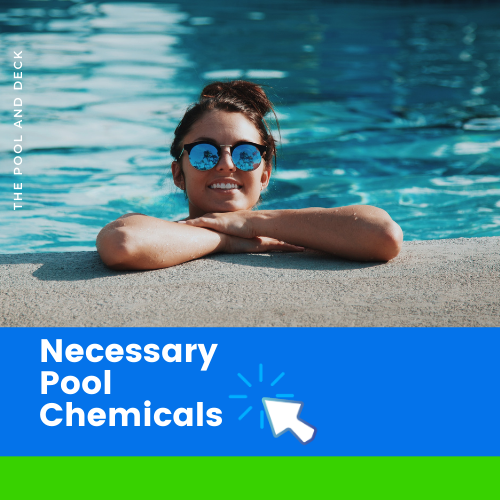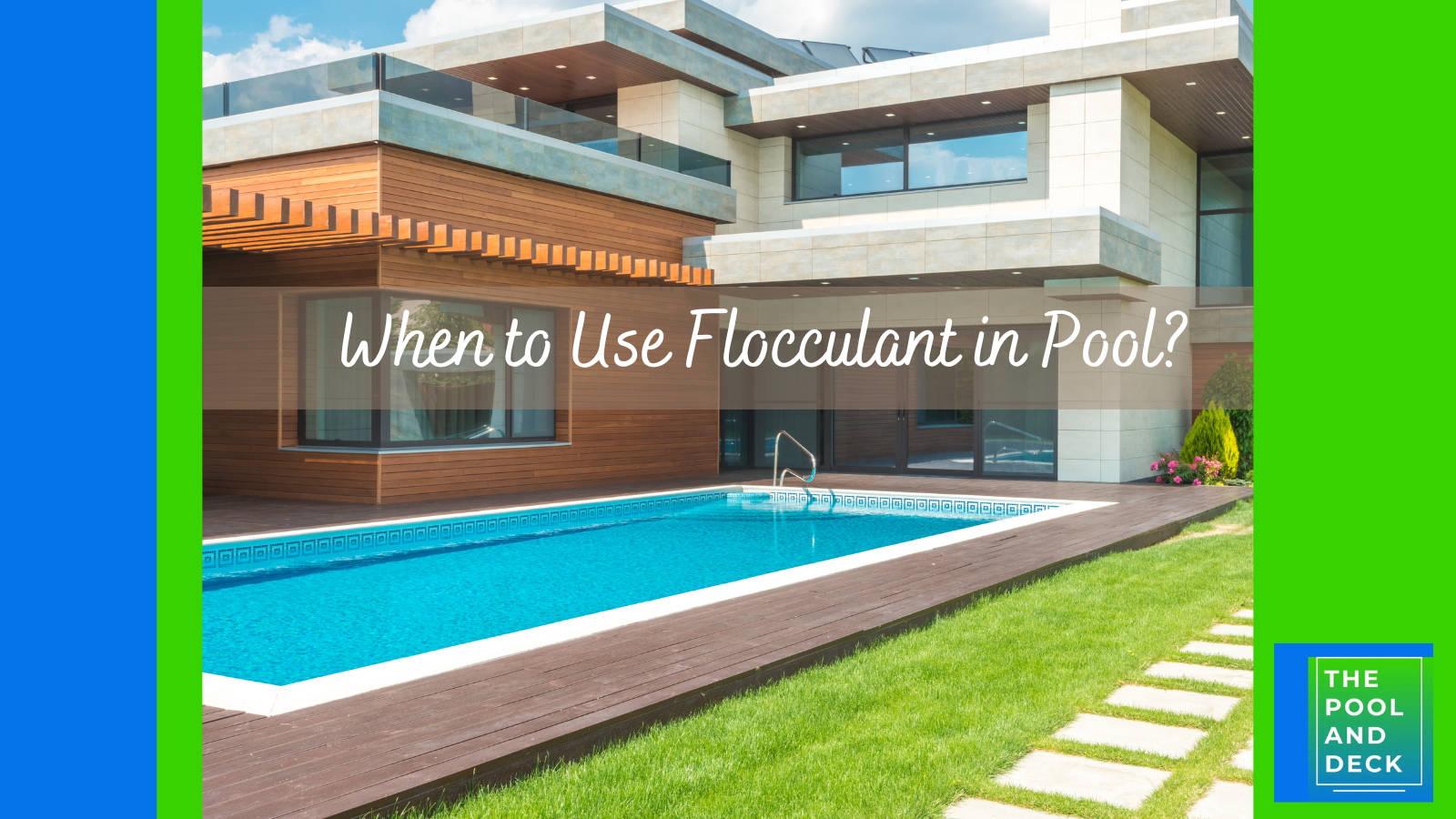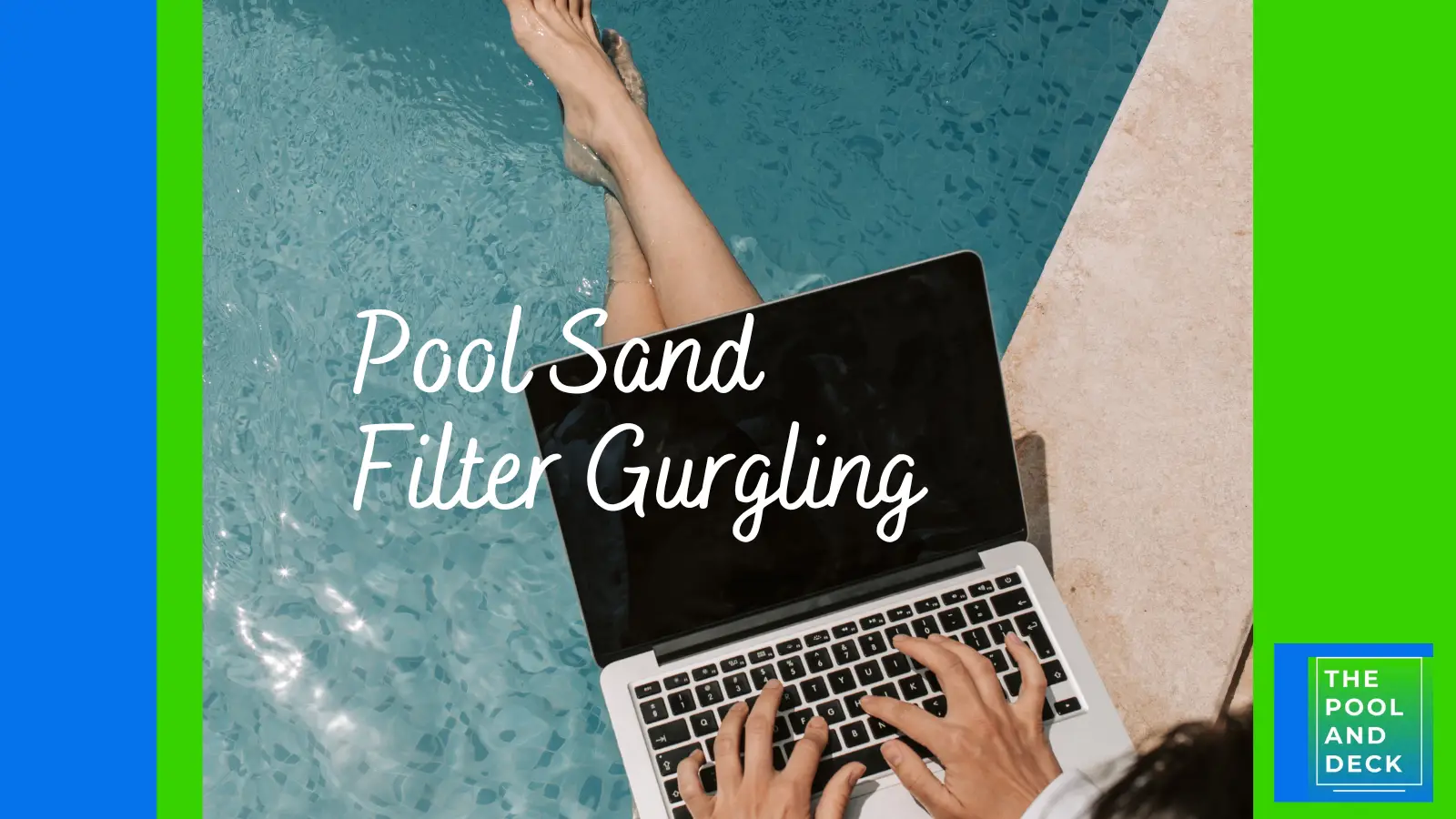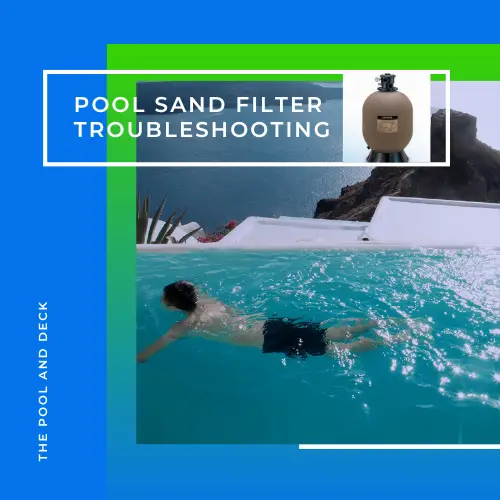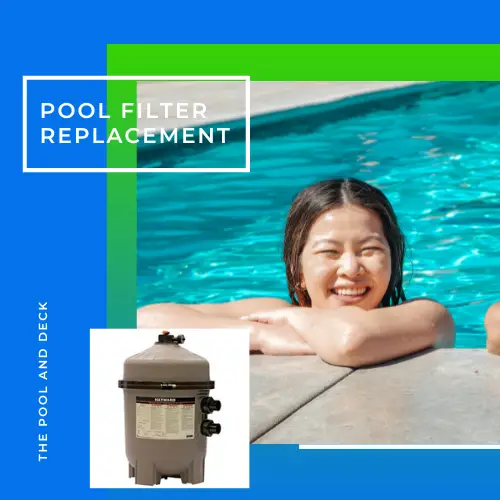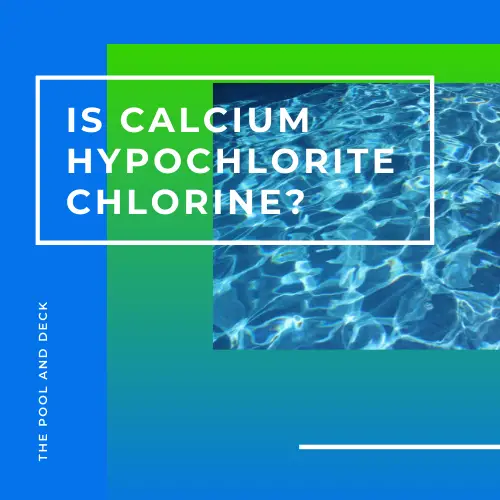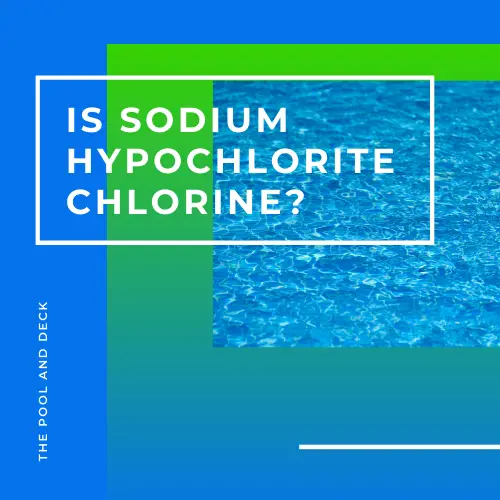Cyanuric Acid in Pool Level: 3 Important Facts You Need To Know!
As a pool owner do you ever wonder about the Cyanuric Acid in Pool Level? Is it important? What should it be? How can you maintain it at the correct level?
You add Chlorine to your pool to keep the bacteria and algae in check. But UV rays from the sun deplete Free Chlorine. You need Cyanuric Acid (CYA) in your Pool at the correct Level, because it is the sunscreen of your pool.
Low CYA can make your pool unhealthy and cloudy as chlorine gets depleted too fast. CYA reduces Free Chlorine loss due to sunlight. It helps keep your pool water healthy to swim in by keeping the pool from turning green with algae bloom.
Pool water chemistry is complex. Actually, it’s not that complex.
The secret to a safe & healthy pool is ensuring that all the pool chemicals are maintained at the correct levels. Not too low, but not too high either.
Balanced pool water chemistry, adequate circulation and regular cleaning are all you need to keep your pool safe.
In this post I am going to explain the 3 Important Facts that You Need to Know about Cyanuric Acid (CYA) in your Pool.

As an Amazon Associate, I earn from qualifying purchases.
Table of Contents
FACT #1: What does Cyanuric Acid (CYA) do to Pool Water?
For pool water that is safe to swim, you will need to keep the
- Bacteria & Algae as Low as possible
- Pool water balanced for acidity / alkalinity
Chlorine Kills Pool Bacteria
Your main weapon against bacteria in the pool is Chlorine. Chlorine for the pool may come in different forms. Granular Chlorine Powder, Chlorine Tablets or Liquid Chlorine are some of the options available. Even household bleach can be used.
When these chlorine products are added to the pool they release Free Chlorine (FC) in the water. Pool water combines with chlorine to form a very weak acid called “hypochlorous acid”.
Though weak for humans, it is strong enough to kill bacteria in the pool. According to LIVESCIENCE, “hypochlorous acid” is
“very proficient at killing bacteria such as salmonella and E. coli, and it also knocks out many viruses”
The cell walls of bacteria are negatively charged and repel other negatively charged molecules in the pool water. Hypochlorous Acid has a neutral charge. As such it can make contact with, invade and annihilate bacterial cells.
Half Life of Free Chlorine (FC)
The half life of Free Chlorine (FC) in pool water, that has UV rays falling on it, could be as low as 45 minutes. If you start off by 4 ppm of free chlorine, 45 minutes later you would have only 2 ppm. Wait another 45 minutes and the free chlorine level is down to 1 ppm.
If used properly, free chlorine* can kill most germs within a few minutes. CDC recommends pH 7.2–7.8 and a free chlorine concentration of at least 1 ppm in pools and at least 3 ppm in hot tubs/spas.
Clearly free chlorine needs some protection, when bombarded by UV rays. It needs a sunscreen. It needs Cyanuric Acid (CYA).
How does Cyanuric Acid help Chlorine kill Bacteria?
Cyanuric Acid (CYA) is a hexagon shaped molecule with 3 Nitrogen atoms. The Chlorine atom can attach itself to the Nitrogen atom through a weak bond.
As long as the Chlorine atom is attached to the Nitrogen atom, it is not “free”. It is safe from the harsh UV rays of the sun.
When the CYA molecule, with Chlorine atoms attached to it, gets into the vicinity of a pathogen, the Chlorine atom disengages and becomes “free chlorine”.
The free chlorine enters the bacteria cell and wrecks havoc on the protein chains inside. Before long the bacteria is dead!
Basically CYA shields Chlorine from UV rays, till the Chlorine is close enough to attack and kill a bacteria cell.
FACT #2: What Should the Cyanuric Acid (CYA) Level be in your Pool?
Cyanuric Acid (CYA) is important to keep your pool safe. But it does not mean, the more the CYA the better. Too little is not good. Too much is not better. Optimal level is the best.
NOTE: Cyanuric Acid (CYA) is not required for indoor pools as they are not exposed to UV radiation.
What happens when the Cyanuric Acid (CYA) Level in the Pool is Low?
Too little is not good because the Chlorine atoms can not find enough Nitrogen atoms in the CYA molecules. The Free Chlorine will deplete fast if your pool is exposed to sunlight.
The FC level will drop below 1 ppm. Bacteria will be able to multiply and flourish making your pool unsafe to swim in. Your family, especially younger children or the elderly, will be exposed to the risk of bacterial infections.
What happens when the Cyanuric Acid (CYA) in the Pool is High?
The ability of free chlorine to kill bacteria is not a simple function of the amount of free chlorine in the pool. The effectiveness is measured by Oxidation Reduction Potential (ORP).
In the swimming pool environment, the free chlorine, and the resulting hypochlorous acid (HOCl) are the Oxidants. The microorganisms, such as the bacteria and algae, are the Reductants.
But other organic matter (dirt & dust) and chemicals (chloramines & CYA) are also Reductants.
If their level is high then ORP levels will drop and the chlorine will be less effective in killing bacteria.
A higher than optimal level of CYA, causes the ORP level to drop. In other words the free chlorine is less effective in killing the bacteria and keeping your pool safe.
High levels of CYA also damage pool plaster surfaces
Worst of all, higher than optimal levels of CYA promote the growth of a dangerous microorganism called Cryptosporidium parvum. This is a chlorine resistant organism known to cause gastrointestinal illness.
Click on the image below to reach the page with all the Necessary Pool Chemicals.
What is the Recommended Cyanuric Acid (CYA) Level in the Pool?
The ORP level is also impacted by the pH level of the pool water. Higher pH levels reduce ORP level and vice versa.
The ORP level is also impacted by the pH level of the pool water. Higher pH levels reduce ORP level and vice versa. In the presence of Cyanuric Acid (CYA), the relationship between pH and chlorine is considerably altered.
For example, if your pool maintains a pH of 7.2, about 63 percent of the chlorine is in its active form. If you introduce just 30 ppm of cyanuric acid to the pool, this drops to 1.6 percent of the chlorine being in its active form.
Bio Active
Based on information collected from various reliable sources the CYA levels in a swimming pool should be between 20-50 ppm.
| CYA(ppm) | Min FC(ppm) | Target FC(ppm) | % Chlorine remaining after 1 hour | Comments |
|---|---|---|---|---|
| 20 | 2 | 3-5 | 95% | Recommended for Indoor Pools |
| 30 | 2 | 4-6 | 98% | Recommended |
| 40 | 3 | 5-7 | 98% | Recommended |
| 50 | 4 | 6-8 | 99% | Recommended |
| 60 | 5 | 7-9 | 99% | Rarely Necessary |
| 70 | 5 | 8-10 | 100% | Not Recommended |
| 80 | 6 | 9-11 | 100% | Not Recommended |
| 90 | 7 | 10-12 | 100% | Not Recommended |
| 100 | 8 | 11-13 | 100% | Not Recommended |
Information Sources:
The level of cyanuric acid in a pool should be routinely measured with a test kit made for this purpose. The recommended level is 20‐50 ppm; levels over 100 ppm will not be accepted.
SWIMMING POOL WATER CHEMISTRY FACT SHEET
FACT #3: How to Adjust the Cyanuric Acid Level in the Pool?
You may not be aware but the Cyanuric Acid (CYA) level in your pool keeps rising. The trouble is that CYA does not dissipate or evaporate. It just stays in the pool.
Chlorine levels in a swimming pool are often topped up using sanitizing products containing trichlor or dichlor. Both contain high levels of Chlorine as well as Cyanuric Acid (CYA). Shocking the pool with dichlor is another reason for CYA levels in the pool to go up.
Chlorine gets depleted as it kills bacteria, but CYA lingers on. CYA levels in the pool keep rising with time. Cyanuric Acid (CYA) Level in the pool only drops when a filter is backwashed or the pool is partially drained.
You should check the CYA level in your pool at regular intervals. Once a week is good but once a fortnight is also OK.
Drain the pool a little and then top it up with fresh water, if the CYA level exceeds 50 ppm. This is the most cost effective process.
Never drain the pool more than 1/3rd as there is a risk that the pool can pop due to external hydrostatic pressure.
For more information check out my Pool Chemistry for Beginners: With 5 Super Helpful Cheat Sheets!
Now there is an alternative. You can treat your pool with Bio-Active Cyanuric Acid Reducer available on Amazon.
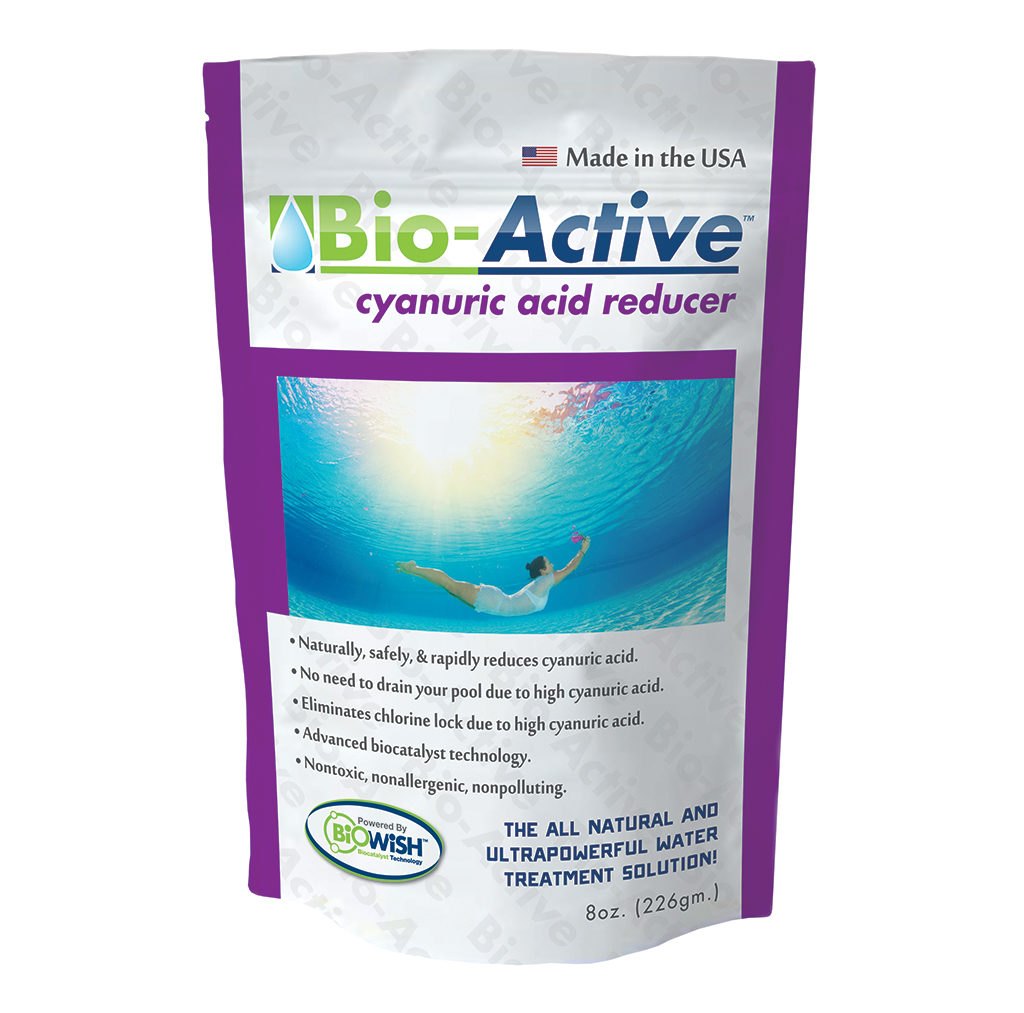
The key features of the product are:
- Naturally, Safely & Rapidly reduce cyanuric acid.
- No need to drain your pool due to high cyanuric acid.
- Eliminates chlorine lock due to high cyanuric acid.
- Advanced biocatalyst technology.
- Nontoxic, nonallergenic, nonpolluting.
Thank you very much for reading the post. I do hope you found it informative and helpful.

